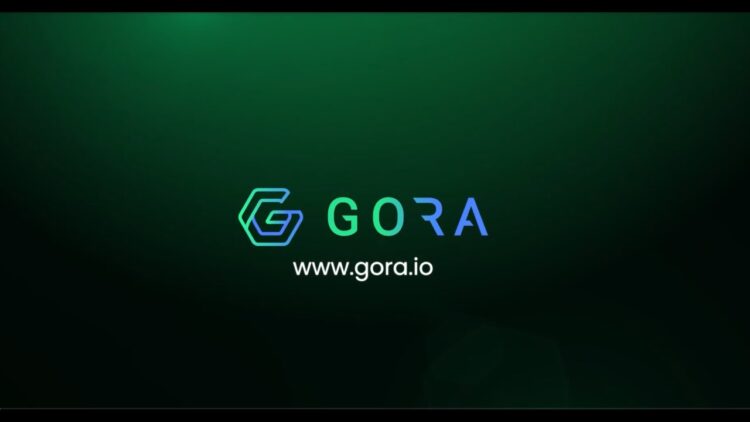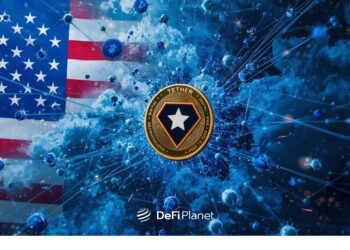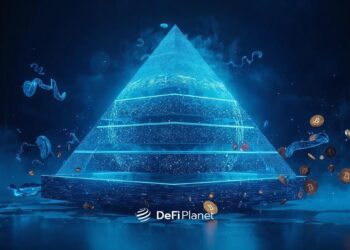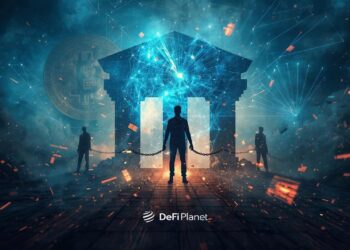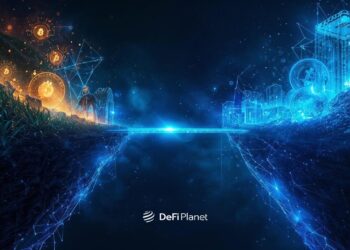Blockchain’s greatest strength is its self-sufficiency, yet it is also its greatest weakness. The closed nature of blockchain technology makes it unsuitable for applications requiring real-time access to off-chain data. Hence, the incredible technology is almost useless for mainstream and everyday applications.
Blockchain oracles solve this problem by acting as bridges that link the on-chain and off-chain worlds. These oracles retrieve off-chain data from data feeds and supply it to the blockchain. For example, a blockchain oracle could gather information about a football match’s outcome from the external world and provide it to a sports decentralized application (dApp). This crucial role played by oracles, such as Gora, ensures blockchain technology lives up to its promise.
While this solution seems straightforward, it introduces a new issue known as the oracle problem. This arises because data obtained from off-chain sources might be inaccurate. dApps relying on blockchain oracles need to trust that the oracle acts honestly, posing a security risk. Additionally, this creates a single point of failure, contradicting the decentralized nature of blockchain technology.
This is where Gora is different from the pack.
What is Gora?

Gora is a permissionless blockchain oracle solution developed on the Algorand blockchain. Its design aims to provide accurate and timely data in a manner reminiscent of Web 2.0 while maintaining the core tenets of blockchain technology (decentralization, security, and scalability).
How Gora Works
Gora works because of the two interconnected mechanisms running simultaneously.
Feed Providers
Gora relies on feed providers to obtain relevant data. These providers are network participants who are incentivized to supply accurate and timely data. They can be individuals, organizations, or data aggregators with the necessary data for the Gora network. The main goal of feed providers is to monetize their contribution to the network.
To ensure the reliability of data and prevent a single point of failure, Gora incorporates a diverse range of feed providers. Thus, because of these multiple independent sources, the system can verify the data from different providers and drastically reduce the risk of incorrect or malicious data being fed into the network.
Maintaining the honesty and integrity of feed providers is crucial, and incentives play a vital role in achieving this. These incentives are carefully designed to reward feed providers for delivering accurate and dependable information while also penalizing them for providing false or manipulated data.
Data feeds currently available on Gora include price feeds, sports feeds, weather feeds, NFT feeds, blockchain feeds, and flight feeds, with plans to accommodate more data feeds in the future.
Node Runners/Operators
Node runners/operators equally play a significant role in maintaining data accuracy on the Gora network. They provide the necessary infrastructure to enable off-chain data integration with the blockchain. Additionally, they uphold network security through the use of a Pure Proof-of-Stake (PPoS) consensus, which requires staking the GORA token.
Node runners verify the accuracy of data provided by feed providers before integrating it into the network. They also act as receivers and gatekeepers of data requests, ensuring that these requests contain all the required information, adhere to proper formatting, and meet the specific requirements of the Gora protocol.
By emphasizing the importance of on-chain validation and leveraging the PPoS consensus mechanism, node runners effectively safeguard the Gora network and ensure the reliability of the data it provides.
How To Access Data on Gora
Participants on the Gora network who require access to data are referred to as consumers. These consumers can be dApps, individuals, or organizations in need of off-chain data.
To interact with Gora, consumers use events, a communication channel between Gora and end users, to request specific data or execute computations. These events can either be request events or subscription events.
Consumers use request events to obtain the outcome of a single event or perform a computation.
Subscription events, on the other hand, enable recurring requests. They offer the same functionality as request events but allow consumers to specify parameters for generating new requests at regular intervals or based on certain conditions. Subscription events enable automated and recurring interactions with the Gora protocol.
When consumers initiate an event by sending a blockchain request to the Gora contract, they trigger actions within the node runner and update the protocol’s state.
By default, the data Gora provides is an aggregation of results from multiple feed providers. This decentralized approach adds to the network’s robustness. However, if consumers choose to access data from a specific feed provider, they can make a direct request, trusting the integrity of that provider.
The GORA Token
At the heart of Gora’s functionality lies its native token, GORA. The token is designed to serve multiple purposes within the Gora network. It empowers holders to uphold the integrity of the network, maintain its trustworthiness and transparency at every juncture.


Here are some of the functions of the token on the network.
- Governance: Token holders actively participate in periodic governance by voting on the project’s direction. This allows them to have a say in shaping the network’s future.
- Access to Real-World Data: The token acts as a medium of exchange within the network, especially transactions between consumers and data providers. Consumers who want access to data from the Gora protocol will have to use the token as payment for the service.
- Node Operation: Node runners are also required to stake a portion of their GORA tokens to operate their nodes. This stake is collateral, ensuring their commitment to maintaining the network’s security and integrity.
- Delegation: Users who prefer not to lock up their tokens can delegate their GORA tokens to trustworthy validators. These validators, in return, accurately verify data and are rewarded with GORA tokens. Delegators must carefully choose validators to earn rewards through their reliable and diligent work.
The supply for the GORA token is capped at 100 million tokens, with 33% reserved for ecosystem rewards. A detailed breakdown of its tokenomics, as audited by Tokenomics DAO, can be found here.
Limitations Of The Gora Protocol
While Gora is a promising blockchain solution that aims to revolutionize data representation and access to quality data, there are some issues that may hinder its success. These issues include:
Competition
The blockchain oracle sector is fiercely competitive, with numerous projects striving to offer dependable data feeds to the blockchain ecosystem. Gora would encounter challenges in achieving success due to the need for extra efforts to distinguish itself within an already saturated blockchain oracle space.
Centralization
Given the industry’s competitive nature and the difficulties it might face in gaining adoption, Gora could potentially become a centralized blockchain oracle against its wishes. This could occur if only a limited number of feed providers are on the network to supply off-chain data to the protocol.
Gora must successfully navigate these obstacles to fully realize its potential in revolutionizing data representation and access within the blockchain domain.
Gora’s Year in Focus
Gora completed its initial DEX offering (IDO) phase for its GORA token and launched fully on the Algorand blockchain on June 5, 2023. Gora has an exciting roadmap planned for the year 2024, outlined below:
OCT-Global Hackathon
One of the highlights of Gora’s 2024 roadmap is the OCT-Global Hackathon, scheduled to take place in the first quarter of the year. This hackathon is open to all developers who want to build using Gora’s ready templates. Participants stand a chance to win up to $200,000 in prizes.
Expansion to the EVM Chain
In the first quarter of the year, Gora intends to bring its Oracle services to the Ethereum Virtual Machine (EVM) chain. This expansion is expected to bring more efficiency to the EVM chain with Gora’s accuracy and reliability. Developers creating smart contracts on the EVM chain will be able to leverage Gora to develop more sophisticated and reliable applications.
Expansion to the Cosmos Network
In the second quarter of the year, Gora plans to expand its services to the Cosmos network. Cosmos enables developers to create networks without having to start from scratch. With Gora, Cosmos is expected to become even more sophisticated, and its growth trajectory is bound to accelerate.
Visit here to learn more about Gora.
Disclaimer: This article is intended solely for informational purposes and should not be considered trading or investment advice. Nothing herein should be construed as financial, legal, or tax advice. Trading or investing in cryptocurrencies carries a considerable risk of financial loss. Always conduct due diligence.
If you would like to read more articles like this, visit DeFi Planet and follow us on Twitter, LinkedIn, Facebook, Instagram, and CoinMarketCap Community.
“Take control of your crypto portfolio with MARKETS PRO, DeFi Planet’s suite of analytics tools.”

